Results 6,531 to 6,540 of 12094
Thread: Anandtech News
-
12-13-16, 03:46 PM #6531
Anandtech: AMD Gives More Zen Details: Ryzen, 3.4 GHz+, NVMe, Neural Net Prediction,
In the eternal battle to drive more details out of AMD ahead of the full launch of its new Zen microarchitecture based CPUs, today AMD is lifting the lid on some new features in order to whet the appetite (and appease the hype-train, perhaps) and that will be part of the product launch. We now have new details on the brand naming, some platform details, and a high-level overview of what will be the key points being promoted when it comes to market.
We’ve covered a lot of Zen, from the initial announcement to some of the microarchitecture details at Hot Chips through to discussing the utility of singular benchmark data and then what might be happening on the server side through a detailed analysis of motherboards on display. A lot of us want it out already, and when it does, it will come out under the brand ‘Ryzen’.
Ryzen and AM4
It is pronounced ‘Rye-zen’, not ‘Riz-zen’, to clarify.
As expected, there will be several SKUs in the brand, although AMD is not releasing many details aside from the cache arrangement of the 8-core, thread chip (which we already knew was 4MB of L2 + [8+8] MB of L3 victim-cache), and that the base clock for the high-end SKU will be at least 3.4+ GHz. The fact that AMD says ‘at least’ dictates that they are still deciding exactly what to do here, although a similar thing was said leading up to the launch of Polaris-based RX cards (though that’s a different department).
We know that Ryzen will use the AM4 platform, shared with the previous generation Bristol Ridge which remains an OEM-only product for now. We’ve gone into detail about how AM4 will operate, using a split IO design between the CPU and the chipset such that for minimal function, a chipset is not needed, however AMD has pointed out that with Ryzen, AM4 with the right chipset will support USB 3.1 Gen 2 (10 Gbps), NVMe SSDs, SATA-Express, and offer ‘ultimate upgradability’. The latter point may give an indication to the Ryzen based chipsets might offer numerous PCIe lanes, similar to what Intel does on the 100-series. That said, Intel has been developing that feature over years, and the Bristol Ridge chipsets for AM4 that have been announced already are not quite up to par with that, so it will be interesting to see.
We’re still waiting for detailed information on PCIe lane counts on Ryzen, how big that micro-op cache is in the core, if the L3 victim cache has limitations, how good the DDR4 controller is, power consumption, and what exactly the single core performance / IPC level is. Actually AMD did go into more detail with a few of these areas as well.
Power, Performance and Pre-Fetch: AMD SenseMI
Part of the demo in the pre-brief was a Handbrake video transcode, a multithreaded test, showing a near-identical completion time between a high-frequency Ryzen without turbo compared to an i7-6900K at similar frequencies. This mirrors the Blender test we saw back in August, although using a new benchmark this time but still multi-threaded. AMD also fired up some power meters, showing that Ryzen power consumption in this test was a few watts lower than the Intel part, implying that AMD is meeting its targets for power, performance and as a result, efficiency. The 40%+ improvement in IPC/efficiency is still being thrown around, and AMD seems confident that this target has been surpassed.
To that extent, at the pre-briefing, Ryan was shown two systems running Titan X graphics cards in SLI and Battlefield 1 at 4K settings - one system was running Ryzen, and the other an i7-6900K (the 8-core Broadwell-E chip). Ryan was unable to determine an obvious visual difference between the two frame-rate wise, which was the point of the demo.
Mark Papermaster, CTO of AMD, explained during our briefing that during the Zen design stages, up to 300 engineers were working on the core engine with an aggressive mantra of higher IPC for no power gain. This is not an uncommon strategy for core designs. Part of this will be down to two new power modes, that adjust and extend the power/frequency curve, which are part of AMD’s new 5-stage ‘SenseMI’ technology.
SenseMI Stage 1: Pure Power
A number of recent microprocessor launches have revolved around silicon-optimized power profiles. We are now removed from the ‘one DVFS curve fits all’ application for high-end silicon, and AMD’s solution in Ryzen will be called Pure Power. The short explanation is that using distributed embedded sensors in the design (first introduced in bulk with Carrizo) that monitor temperature, speed and voltage, and the control center can manage the power consumption in real time. The glue behind this technology comes in form of AMD’s new ‘Infinity Fabric’.
‘What is this new Infinity Fabric?’ I hear you say. It was only explained in the context of that it provides control and through the Infinity System Management Unit it can adjust power consumption while keeping in mind everything else that’s happening. The fact that it’s described as a fabric suggests that it goes through the entire processor, connecting various parts together as part of that control. Whether this is something wildly different to what we saw in Carrizo, aside from being the next-gen power adjustment and under a new name, is hard to determine at this point but we are probing for more details.
The upshot of Pure Power is that the DVFS curve is lower and more optimized for a given piece of silicon than a generic DVFS curve, which results in giving lower power at various/all levels of performance. This in turn benefits the next part of SenseMI, Precision Boost.
SenseMi Stage 2: Precision Boost
For almost a decade now, most commercial PC processors have invoked some form of boost technology to enable processors to use less power when idle and fully take advantage of the power budget when only a few elements of the core design is needed. We see processors that sit at 2.2 GHz that boost to 2.7 GHz when only one thread is needed, for example, because the whole chip still remains under the power limit. AMD is implementing Precision Boost for Ryzen, increasing the DVFS curve to better performance due to Pure Power, but also offering frequency jumps in 25 MHz steps which is new.
Precision Boost relies on the same Infinity Control Fabric that Pure Power does, but allows for adjustments of core frequency based on performance requirements and suitability/power given the rest of the core. The fact that it offers 25 MHz steps is surprising, however.
Current turbo control systems, on both AMD and Intel, are invoked by adjusting the CPU frequency multiplier. With the 100 MHz base clock on all modern CPUs, one step in frequency multiplier gives 100 MHz jump for the turbo modes, and any multiple of the multiplier can be used on the basis of whole numbers only.
With AMD moving to 25 MHz jumps in their turbo, this means either:
- The base frequency has reduced down to 25 MHz and AMD is able to implement a 136x multiplier to reach 3.4 GHz, or
- AMD can implement fractional multipliers, similar to how processors in the early 2000s were able to negotiate 0.5x multiplier jumps, or
- Precision Boost only applies to internal clocks that the user doesn’t see or control, but can assist with performance.
Without additional information, the second point in that list seems more in line with what would be possible. If we consider that Zen’s original chief designer was Jim Keller (and his team), known for a number of older generation of AMD processors, a similar technology might be in play here. If/when we get more information on it, we will let you know.
SenseMi Stage 3: Extended Frequency Range (XFR)
The main marketing points of on-the-fly frequency adjustment are typically down to low idle power and higher performance when needed. The current processors on the market have rated speeds on the box which are fixed frequency settings that can be chosen by the processor/OS depending on what level of performance is possible/required. AMD’s new XFR mode seems to do away with this, offering what sounds like an unlimited bound on performance.
The concept here is that, beyond the rated turbo mode, if there is sufficient cooling then the CPU will continue to increase the clock speed and voltage until a cooling limit is reached. This is somewhat murky territory, though AMD claims that a multitude of different environments can be catered for the feature. AMD was not clear if this limit is determined by power consumption, temperature, or if they can protect from issues such as a bad frequency/voltage setting.
By the sounds of it, this is a dynamic adjustment rather than just another embedded look-up table such as P-states. AMD states that XFR is a fully automated system with no user intervention, although I suspect it will still have an on/off switch in the BIOS. It also somewhat negates overclocking if your cooling can support it, which then brings up the issue for overclocking in general: casual users may not ever need to step into the overclocking world if the CPU does it all automatically.
I imagine that a manual overclock will still be king, especially for extreme overclockers competing with liquid nitrogen, as being able to personally fine tune a system might be better than letting the system do it itself. It can especially be true in those circumstances, as sensors on hardware can fail, report the wrong temperature, or may only be calibrated within a certain range.
It does raise the question as to how overclockable Ryzen will be, how many SKUs will be unlocked, or if XFR may only be on certain processors. As the Zen microarchitecture is destined for server and mobile as well, XFR will have different connotations for both of those markets (some of which might not be welcome).
SenseMi Stage 4+5: Neural Net Prediction and Smart Prefetch
Every generation of CPUs from the big companies come with promises of better prediction and better pre-fetch models. These are both important to hide latency within a core which might be created by instruction decode, queuing, or more usually, moving data between caches and main memory to be ready for the instructions. With Ryzen, AMD is introducing its new Neural Net Prediction hardware model along with Smart Pre-Fetch.
AMD is announcing this as a ‘true artificial network inside every Zen processor that builds a model of decisions based on software execution’. This can mean one of several things, ranging from actual physical modelling of instruction workflow to identify critical paths to be accelerated (unlikely) or statistical analysis of what is coming through the engine and attempting to work during downtime that might accelerate future instructions (such as inserting an instruction to decode into an idle decoder in preparation for when it actually comes through, therefore ends up using the micro-op cache and making it quicker).
Modern processors already do decent jobs when repetitive work is being used, such as identifying when every 4th element in a memory array is being accessed, and can pull that data in earlier to be ready in case it is used. The danger of smart predictors however is being overly aggressive – pulling in too much data that old data might be ditched because it’s never used (over prediction), pulling in too much data such that it’s already evicted by the time the data is needed (aggressive prediction), or simply wasting excess power with bad predictions (stupid prediction…).
AMD is stating that Zen implements algorithm learning models for both instruction prediction and prefetch, which will no doubt be interesting to see if they have found the right balance of prefetch aggression and extra work in prediction.
It is worth noting here that AMD will likely draw upon the increased L3 bandwidth in the new core as a key element to assisting the prefetch, especially as the shared L3 cache is a victim cache and designed to contain data already used/evicted to be used again at a later date.
More Details
AMD did confirm that the launch for Ryzen is still Q1, and Naples (the server counterpart for the Zen microarchitecture) is still on for Q2.
Gallery: AMD Ryzen 2016-12-13 Slide Deck





Today, AMD is putting on a Livestream called ‘New Horizon’, where all this information is being formally released. I’m at the event live, hopefully running a live blog, and I will try to get some extra time with an engineer that walks by and wants to chat. I want to get more information on the Infinity Fabric, the Neural Net Predictor and chipset integration.
More...
-
12-14-16, 08:33 AM #6532
Anandtech: The Plextor M8Pe (512GB) SSD Review
The Plextor M8Pe is their second PCIe SSD and their first to support PCIe 3.0 or NVMe. The M8Pe is a M.2 SSD based on Marvell's 88SS1093 controller and Toshiba 15nm MLC NAND flash. Plextor sells the M8Pe in three configurations: as a bare M.2 module, with a heatspreader over the M.2 module, or in a PCIe x4 adapter card that provides a large heatsink and LED lighting. The M8Pe is Plextor's flagship SSD and is positioned in the mid- to high-end segment of the PCIe SSD market.
More...
-
12-14-16, 12:40 PM #6533
Anandtech: ADATA Introduces SC660H and SV620H External SSDs with 3D TLC NAND
ADATA last week announced its new SC660H and SV620H external SSDs, featuring 3D TLC NAND memory, which are new versions of the SC660 and the SV620 drives introduced last year. The new drives have additional capacity and an additional letter in the model numbers. The internal changes are much more significant than switching the type of memory, as it looks like the SSDs are now built on a completely different platform. Moreover, the fact that ADATA decided to expand usage of 3D NAND for external SSDs seems very noteworthy.
It is no secret that SSD suppliers use their desktop/mobile parts with a SATA-USB bridges to build external SSDs. Consequently these external drives inherit all the peculiarities from their ancestors, such as capacity, supported features and so on. The original ADATA SC660 and SV620 packed the Premier SP550 SATA SSD with the JMicron JMS567 SATA-USB 3.0 bridge and thus offered 240 GB or 480 GB capacity. The Premier SP550 is based on the Silicon Motion SM2256 controller as well as TLC NAND flash memory produced by SK Hynix using planar 16 nm technology, which is relatively cheap. The inexpensive controller, as well as widely available TLC memory, made the SP550 as well as the SC660 and the SV620 very affordable and relatively popular.
The new ADATA SC660H and the ADATA SV620H share chassis design with the SC660 and the SV620, but their internal architecture is completely different. The new drives are based on 384 Gb 3D TLC NAND memory chips made by Micron/IMFT and come in 256 GB and 512 GB configurations. Given the capacity points, it is highly likely that the new drives integrate ADATA’s Ultimate SU800 SSDs featuring the Silicon Motion SM2258 controller. Performance of these such drives is limited to 440 MB/s sequential read speed (as conditioned by the maximum real-world transfer rate of USB 3.0 interface due to overhead incurred by 8b/10b encoding), just like in the case of ADATA’s rugged SD700 SSDs.
Following the announcement of the SC660H and the SV620H drives, ADATA removed their predecessors from the list of its contemporary external SSDs, which may be an indicator that the parts have been discontinued and will only be available while the stocks last. As it appears, three out of four consumer external SSDs from ADATA are now based on IMFT’s 3D TLC NAND. The latter promises to offer a bit better endurance and a bit higher performance compared to 2D TLC NAND, but keep in mind that the real-world USB 3.0 bandwidth rather than NAND or even the controller limits the performance of ADATA’s contemporary external SSDs.
Recently Micron said that it had achieved a bit crossover between 2D and 3D NAND (i.e., it produces more 3D NAND bits than 2D NAND bits). The company also claimed that that the first-gen 3D NAND was 20 – 25% cheaper to make than the latest-gen 2D NAND on a per-bit basis, which is in line with its expectations revealed early this year. As it appears, it is now cheaper for ADATA to get Micron’s 3D TLC NAND rather than SK Hynix’s planar TLC memory, which is not too surprising given a strong relationship between ADATA and Micron.ADATA SC660H, SV620H and SD700 Specifications SC660H SV620H SD700 256 GB 512 GB 256 GB 512 GB 256 GB 512 GB 1 TB Speed Up to 440 MB/s Interface USB 3.0 Color Titanium Titanium Black or Yellow Dimensions 120 × 76 × 9.6 mm
4.7 × 3.0 × 0.38 in115 × 78 × 11.5 mm
4.5 × 3.0 × 0.4 in83.5 × 83.5 × 13.9 mm
3.3 × 3.3 × 0.5 inchesModel Number - - - - ASD700-256GU3
-CBK (black)
-CYL (yellow)ASD700-512GU3
-CBK (black)
-CYL (yellow)ASD700-1TU3
-CBK (black)
-CYL (yellow)Price $120 $190 $100 $180 $100 $190 unknown
ADATA says that the SC660H and the SV620H SSDs will be available at Amazon and Newegg shortly, which is logical since the drives use SSDs that are already in high-volume production. As for pricing, the SC660H is $10 - $20 more expensive than the SV620H due to its thinner design and a more durable metal enclosure. As usually, external SSDs are considerably more expensive than their internal brethren.
Gallery: ADATA Introduces SC660H and SV620H External SSDs with 3D TLC NANDADATA SC660H, SV620H, SD700 and SU800 MSRP Comparison SC660H SV620H SD700 SU800 256 GB 512 GB 256 GB 512 GB 256 GB 512 GB 1 TB 256 GB 512 GB 1 TB Read Speed Up to 440 MB/s Up to 560 MB/s Form-Factor External SSD with USB 3.0 interface 2.5"/7 mm SSD Price $120 $190 $100 $180 $100 $190 unknown $80 $140 $270 





Related Reading:
- ADATA SE730, SV620 and SC660 External SSDs Review
- ADATA Launches the SD700 External SSD: Dust, Water and Shock Resistant (with 3D NAND)
- ADATA Ultimate SU800 SSDs in M.2 Announced: Entry-Level 3D NAND SSDs for Laptops
- ADATA Launches XPG SX8000: High-End M.2 NVMe SSD Featuring 3D MLC NAND
- ADATA Introduces Ultimate SU800 SSD: SMI Controller, 3D NAND, SATA Interface
More...
-
12-14-16, 02:00 PM #6534
Anandtech: Aquantia Launches New 2.5G/5G Multi-Gigabit Network Controllers for PCs
Frequent readers of AnandTech will have recognized that our coverage of higher speed network interfaces over copper, particularly 10G, for the home and business has increased recently. This is perhaps no surprise: 1 Gbit speeds for wired networking have been the norm for fifteen years on consumer level products, but there are certainly some users that require faster network availability in their home/business due to the increased number of devices and size of content, particularly video content, that has exploded this decade.
Arguments aside about external network availability and infrastructure, streaming inside the home or in the office typically comes down to a couple of key factors – the size of the networking backbone and the capability of each device connected to it. For consumer infrastructure that stays on copper, 1Gbit or teamed connections has been the limit for long distance Cat 5a/Cat 6 cabling, which is fairly cheap, and some solutions have moved to the more expensive 10GBase-T solutions which are power hungry, more enterprise focused and simultaneously a lot more expensive by at least an order of magnitude. 10GBase-T also requires Cat 7 cabling for any serious distance requirements.
Back at the Supercomputing 2015 show, there were several talks about the utility of 2.5G and 5G copper networks. These discussions were primarily focused in the data-center and high-performance categories rather than the consumer, and at the time I commented that it was likely where these standards were to stay as it would require a significant step up to drive a 2.5x/5x adoption for the consumer over a 10x adoption. It was expected that the cost of 10G would start to come down, but over 2016 it has remained consistent, much to the chagrin of enthusiasts.
At the time in 2015, the 2.5G/5G standards were not yet ratified by IEEE. There were chips in the market, solely from Aquantia, for enterprise configurations that were happy to go with an evolving standard for their solution. From September 2016 this changed, and the standards have been ratified with Aquantia, Intel, Cisco and others all involved in the specification. Aquantia’s earlier generation silicon adhered to the standard, and has been deployed in a number of enterprise backbone deployments to the tune of 5M ports a year. Today’s announcement surrounds the launch of two new controllers based on the multi-gigabit standards aimed at more consumer level solutions – specifically ‘client connectivity in enterprise, gaming and SMB applications’.
The chips are small, 11x7mm, and use Aquantia’s expertise in both MAC/PHY management to produce the AQtion brand (as in, ‘Action’), to complement the AQrate (‘accurate’) currently in the ecosystem. The two AQtion controllers are single channel, single port solutions and differ in their speed support:
AQC107: 100M/1G/2.5G/5G/10G
AQC108: 100M/1G/2.5G/5G
The AQC107 will support 10GBase-T on Cat 6 copper cables, adhering to the 802.3an standard, although at a different set of distance limitations. Both chips are targeting a large market of motherboards, routers, office PCs, switches, routers, dongles and anything that a consumer or small/medium business might purchase. This includes add-in PCIe cards. Both chips will support up to PCIe 3.0 x4 connectivity, going down to PCIe 2.0 x1 as required (peak rates will be limited in this mode, obviously).
On price comparisons to current gigabit solutions, Aquantia was unwilling to release the information given that individual contracts will govern the price but they were willing to say that a number of partners are already in production of their hardware. Aquantia wanted to make it clear that they will leave it up to their partners to market and promote the feature set of the controller. This will become important, especially as the motherboard PC networking controller market has a number of options.
Currently the big players are Intel and Realtek, using the I219-V/LM and RTL8111E/F families respectively. Certain versions of the controllers have more management functions, or prioritize some capabilities over the others, and key defining elements are both cost and consumer requests (distributors or clients). Rivet Networks is also a significant player with their Killer brand of networking ICs, focusing primarily on the gaming crowd with controller specific QoS features that are promoted to gamers and prosumers, and used extensively with MSI laptops and MSI/Gigabyte motherboards. Technically Realtek has the Dragon brand here, although we’ve only seen them on one generation of ECS motherboards so far. It’s important to note that only the Killer ICs come with any form of default controller software aimed at consumers for QoS and traffic shaping; Intel has management software at a more admin level. We asked Aquantia about additional consumer software, and was told that currently none is bundled but they are aware of the current market.
For now, the AQtion 2.5G/5G controllers coming to market look to be a premium component, destined for high-end notebooks/PCs, and if the pricing is right, more expansive than the current array of 10G integrated options. One of the issues Aquantia will have, which they also acknowledge, is the switch problem that currently stops 10G being more widespread – the lack of consumer grade and consumer budget level switches. We were told that there are some enterprise models of 2.5G/5G switches currently for more backbone type of work, and it will be up to Aquantia’s partners to spot opportunities in the consumer market. From a personal perspective, the switch side of the equation will be the slowest to change and be a defining aspect for the widespread adoption of this technology. We’ve seen this with 10G, or the fact that the Killer gaming NICs do not have corresponding switches/routers to assist in a number of features that might become irrelevant in a general network. Publicly Aquantia isn’t stating which switch developers they are working with, and as before, leaving those companies to decide/announce their product lines, but I think the switch aspect will be more important to watch over 2017.
On performance metrics, Aquantia have told us that the AQ107 can achieve 9.5 Gbps in each direction in the 10G mode with a CPU utilization of 12-20%, and in 5G mode it can do 4.6 Gbps in each direction with 6-14% CPU use. Due to the higher clock rate of the controller, in 1G mode the controller is quoted as having has lower latency than standard 1G controllers. The AQC107, in 5G mode, will have a typical power consumption around 3W when in use.
We were told that the chips support Wake-on-LAN and Energy Efficient Ethernet standards for power saving (wake-up in the microsecond range), as well as various offloads for reducing CPU use (LSO, LRO, header checksum, receive side scaling). QoS features allow for 32 queues/traffic in each direction, as well as rate shaping capabilities. Drivers will be available for all major flavors of Windows (7 to 10, 32/64-bit), Linux and macOS.
Aquantia stated that they are using their deep contacts at TSMC and GloFo for their product range, but stopped short of stating which process or which node they are using. Behind the scenes we have already have a sniff of upcoming products using Aquantia’s solution that are due to be announced over the next few months.
Source: Aquantia
More...
-
12-14-16, 06:44 PM #6535
Anandtech: LG Announces 32UD99: 4K IPS Display with 95% DCI-P3, HDR and USB-C
LG on Wednesday announced its new flagship display with a UHD 4K resolution, DCI-P3 color gamut, as well as HDR10 support. The LG 32UD99 will be aimed at creative professionals, prosumers and gamers, which suggests more or less reasonable pricing as well as some allowances to handle Microsoft Windows' quirky color management (through support of sRGB). The monitor will be demonstrated at CES next month and will hit the market some time in 2017.
The LG 32UD99 will a 32” display featuring a 10-bit IPS panel that can reproduce 1.07 billion colors and cover over 95% of the DCI-P3 color space, while LG has said nothing about the sRGB and the Adobe RGB color spaces. The monitor will support 10-bit HDR capabilities, but LG is not disclosing details about its LUTs (look-up-tables) and so on. Finally, LG says that the 32UD99 will be able to connect to computers using a single USB Type-C cable (using DisplayPort Alternate Mode) that will also support charging capabilities. Other notable features that LG mentioned in its press release are thin bezels as well as “slim” stand.
The manufacturer is positioning its 32UD99 for different types of applications. Specifically, the company says that the monitor is “well-equipped” to support HDR-capable game consoles, which suggests that it can at least connect them using an HDMI 2.0a port because Sony’s PlayStation 4 Pro and NVIDIA’s SHIELD ATV (the only HDR-capable game consoles available today) do not have a USB-C header. Moreover, neither game console currently support DCI-P3 color space, which means that the display would need to support sRGB alongside HDR10.Preliminary Specifications of the LG 32UD99 Panel 32" IPS Resolution 3840 × 2160 Refresh Rate 60 Hz (?) Viewing Angles 178°/178° horizontal/vertical Color Saturation Over 95% DCI-P3 Display Colors 1.07 billion 3D-LUT supported Inputs 1 × USB-C
1 × HDMI 2.0a (?)Audio Stereo speakers featuring LG RichBass technology
Meanwhile, the support for DCI-P3 and HDR10 means that the display will appeal to professionals from the gaming, digital cinema, home theater and software industries. The consumer standard for DCI is used by a number of consumer electronics devices as well as a variety of Apple devices (and has good prospects to be adopted for televisions as well), and while LG isn't confirming that they're going with the consumer version (as opposed to the digital projection version with its different white point and gamma), it's reasonable to assume that like their other DCI-capable monitors, the 32UD99 will follow the consumer standard as well. Though it may very well be that HDR becomes the most distinctive feature, as HDR support in monitors is currently few and far between. Now, since the LG 32UD99 covers “over 95%” of the DCI-P3 color space (and not 98 – 99% like many professional-grade monitors like LG’s own 31MU97 do), the manufacturer does not straightforward say that the 32UD99 is going to be its new flagship model for creative professionals, but rather points to prosumers and demanding gamers.
Since LG made a preliminary announcement of the monitor this week, it naturally did not disclose all of its specifications leaving many questions unanswered. Nonetheless, it looks like the 32UD99 will be a considerably more universal display than LG’s UltraFine lineup of monitors designed solely with Apple’s macOS and Mac hardware in mind.
Today, LG only announced plans to demonstrate its 32UD99 display at CES, which is why it did not touch upon its pricing and estimated availability timeframe. While it is logical to expect the LG 32UD99 to hit the market sometimes next year at a price that will be above that of average 32” UHD models, that is all we can share at this point.
Related Reading:
- LG Introduces New UltraFine 4K and 5K Monitors
- BenQ Launches the SW320: a 4K Display with HDR for Professionals
- Dell Introduces UltraSharp UP3017 30-Inch Professional Display with 16:10 Aspect Ratio and DCI-P3 Color Space
- EIZO Launches FlexScan EV2780: 27” 2560×1440 Display with USB Type-C Connector
- EIZO Launches ColorEdge CG2730 and CS2730 2560×1440 Displays for Professionals and Prosumers
More...
-
12-14-16, 07:19 PM #6536
Anandtech: Christmas Game Bundles: Civilization VI, Doom, Hitman, Serious Sam VR from
In recent days AMD, NVIDIA and HTC have initiated three new free game campaigns in an attempt to attract attention of gamers to their hardware. AMD will add a free copy of the latest Hitman game to its Radeon RX 470 graphics adapters, as well as Civilization VI and Doom to those who buy a Radeon RX 480 video card and Intel’s Core i5-6600K CPU. Meanwhile NVIDIA has teamed up with HTC to bundle three free virtual reality titles (including Serious Sam VR) to those who buy a qualifying GeForce GTX 1060/1070/1080 along with the HTC Vive VR headset.
AMD Game Bundles: Civilization VI, Doom, Hitman
AMD will include a voucher for Hitman The Complete First Season on Steam as a bundle with any Radeon RX 470 video card purchased from an eligible retailer or a PC featuring the adapter from a qualifying system integrator. The campaign runs globally (with exception of China and Japan) and lasts until February 22, 2017, or when AMD depletes its supply of codes.
AMD has also teamed up with popular retailers to provide Steam codes for Doom and Sid Meier’s Civilization VI to those who buy an Intel Core i5-6600K CPU and a select AMD Radeon RX 480 video card from MSI (in the U.S.) or Sapphire (in Europe) from a participating retailer. In the U.S., you must buy from Newegg and the campaign ends on December 31 or when AMD runs out of codes. In Europe, the list of participating retailers includes Overclockers UK, LDLC and CSL and the campaign runs through January 15 or while supplies of codes last.
Keep in mind that AMD is also bundling Doom with select AM3+ motherboards priced over $99, as well as Civilization VI with all Radeon RX 480 graphics adapters. As usual, more information about all the current AMD promotions is available from the AMD Rewards web site.AMD's Civilization IV, Doom and Hitman Campaigns Hardware Game Campaign End Date AMD Radeon RX 470 Hitman (Complete Season) February 22, 2017 AMD Radeon RX 480 Civilization VI January 15, 2017 MSI Radeon RX 480
Intel Core i5-6600K
(Newegg only)Doom, Civilization December 31, 2016 Sapphire Radeon RX 480
Intel Core i5-6600K
(OcUK, LDLC, CSL only)Doom, Civilization January 15, 2017 AM3+ Motherboard for $99+ Doom January 27, 2017
NVDIA Game Bundles: Raw Data, Serious Sam VR, and Sports Bar VR
In a bid to lure early adopters of VR into their respective camps, NVIDIA teamed up with HTC to provide free game codes for Raw Data, Serious Sam VR, and Sports Bar VR to those who buy a GeForce GTX 1060/1070/1080 graphics card (or a PC featuring one of the GPUs) along with an HTC Vive from a participating retailer or system integrator. The campaign runs globally (except China) through January 31 or while supplies last. At press time, the list of NVIDIA’s partners for the campaign in the U.S. included Newegg and Microsoft Store, but NVIDIA said that the number of participating partners would increase over time.
It is also noteworthy that NVIDIA is still bundling Watch_Dogs 2 with select GeForce GTX 1070/1080 video cards and laptops carrying mobile versions of the graphics processors through December 19. Unfortunately, the two offers may not be combined and you are not going to get four free games with one huge purchase.NVIDIA's VR and Watch_Dogs 2 Campaigns Hardware Game Campaign End Date NVIDIA GeForce GTX 1060/1070/1080 Raw Data
Serious Sam VR
Sports Bar VRJanuary 31, 2017 Desktop/Laptop Featuring GeForce GTX 1060/1070/1080 NVIDIA GeForce GTX 1070/1080 Watch_Dogs 2 December 19, 2016 Laptop Featuring GeForce GTX 1070/1080
Related Reading:
- Game Bundles: Get Civilization VI, Doom, Watch_Dogs 2 for Free with AMD, NVIDIA and Samsung Hardware
- AMD Delivers Crimson ReLive Drivers: Yearly Feature Update for Radeon Gamers and Professionals
- NVIDIA Releases 376.19 WHQL Driver Update: Game Ready Oculus Touch and Two Giveaways
Sources: AMD, NVIDIA.
More...
-
12-16-16, 07:21 AM #6537
Anandtech: SilverStone Launches SX800-LTI: SFX-L, 800 W, 80 Plus Titanium
SilverStone has quietly published specifications of its new SFX-L power supply with 800 W output on its website. The SX800-LTI is designed for small form-factor gaming PCs that use SFX compliant PSUs and can accommodate an SFX power supply that is 3 cm deeper than specified by the standard. The novelty will be one of a few SFX-class PSUs on the market supporting multi-GPU systems and custom-built graphics cards as well as the second PSU to carry the 80 Plus Titanium label.
Growing demand for high-performance SFF gaming PCs in the recent years has catalyzed a number of PSU suppliers to add SFX power supplies into their product lineups. In the meantime, the market of SFF gaming PCs inevitably got segmented, departing from canonical SFF computers but still not transforming into orthodox high-performance desktops. For example, there are Mini-ITX/Micro-ATX systems that can accommodate many hardware components, and there are ATX systems that can take advantage of smaller PSUs, slim/mobile ODDs and so on. Specifically for such PCs (and at requests by select customers), SilverStone last year introduced its first SFX-L PSU, which is 3 cm deeper than specified by the standard (more details at FormFactors.org), but which could provide up to 700 W of power and featured proper cooling using a 120-mm fan. The SFX-L PSUs cannot fit into traditional chassis that follow the SFX spec (for miniature desktops or DVRs/HTPCs) down to the last letter in a bid to minimize dimensions, but most gaming cases have an extra 3 cm and thus are compatible with such power supplies. This year, SilverStone is further increasing the output of its SFX-L to 800 W.
The SilverStone SX800-LTI PSU is compliant with the SFX12V V3.3 as well as ATX12V V2.4 specifications and carries the 80 Plus Titanium certification badge (which means that it is at least 90% – 94% efficient under a 20%, 50% and 100% load for 110V), just like its predecessor. The power supply’s chassis is 125 mm wide, 63.5 mm tall, but is 130 mm deep, up from 100 mm specified by the standard. Surprisingly, SilverStone does not bundle an SFX to ATX adapter bracket with the SX800-LTI PSU (similar to its predecessor) but users can buy it separately for $17, which is odd as the adapter is bundled with less powerful SFX PSUs.SilverStone SFX-L Series DC Output Specifications (Rated @ 40 °C) SX700-LPT SX800-LTI Rated Combined Rated Combined +3.3V 22 A 120 16 A 80 W +5V 22 A 15 A +12V 58.4 A 700 W 66 A 792 W -12V 0.3 A 3.6 W 0.3 A 3.6 W +5Vsb 3 A 15 W 2.5 A 12.5 W Total Power 700 W 800 W
The SX800-LTI is equipped with a 120-mm fan featuring intelligent RPM control (and speeds from 955 RPM to 1695 RPM) that does not spin at loads below 30%. The PSU has a modular design with flexible flat-type cables to ensure easy cable management. Just like other high-end PSUs, the SilverStone unit has over power, over-current, over-voltage and over-temperature protection as well as short circuit protection, and uses Japanese electrolytic capacitors rated to handle increased temperatures.
As for connectivity, the SilverStone SX800-LTI PSU has EPS12V power connectors (one 24-pin and a 4+4-pin connector), four PCIe 6+2-pin power connectors, 12 SATA power connectors, three 4-pin Molex plugs and even an FDD header. The presence of four 8-pin (6+2) auxiliary PCIe power connectors makes the power supply compatible with all high-end graphics cards released in the recent years, including NVIDIA’s GeForce GTX cards that have up to two 8-pin power inputs, AMD’s Radeon R9 Fury X that needs two 8-pin power plugs as well as highly-custom video cards like EVGA’s GeForce GTX 980 Ti K|NGP|N that needs two 8-pin and one 6-pin connector.Silverstone SFX-L PSU Series Connector type 700 W
SX700-LPT800 W
SX800-LTIATX 24 Pin 1 EPS 4+4 Pin 1 PCIe 6+2 Pin 4 SATA 9 12 4P Molex 3 Floppy 1
In fact, SilverStone’s SFX-L PSUs are the only SFX-class power supplies that can boast with such compatibility with advanced graphics adapters. By contrast, most gaming-grade SFX PSUs have one 8-pin connector that is enough for the vast majority of SFF gaming PCs (in the end, you cannot install more than one GTX 1080-class video cards into a Mini-ITX build), but not for those systems pack custom or multi-GPU graphics adapters.
SilverStone’s SX800-LTI PSU is expected to hit the market in the coming weeks, but there is nothing more precise that we can share at this point. MSRP of the unit s also unknown but the previous-generation SFX-L power supply from the company, the SX700-LPT, can be obtained for $160.
Gallery: SilverStone Launches SX800-LTI: SFX-L, 800 W, 80 Plus Titanium





Related Reading:
- The SilverStone SX700-LPT SFX 700W PSU Review
- Enermax Enters SFX Game with Revolution SFX PSUs
- Thermaltake Releases New SFX PSUs: 450W and 600W, rated at 80 PLUS Gold
- FSP Enters the Market of High-Wattage SFX PSUs with Dagger
More...
-
12-16-16, 09:44 AM #6538
Anandtech: ASUS VA326H and VA326N-W: 31.5-Inch Curved 144 Hz FHD Displays for $399
ASUS has introduced two new curved gaming displays that feature large 31.5” VA panels with a 144 Hz refresh rate. The VA326H and VA326N-W monitors have FHD resolution as well as a variety of ASUS’ enhancements designed for gamers. ASUS positions the new products as entry-level models for gamers in budget that also demand a large diagonal, curvature and a high refresh rate.
The ASUS VA326-series displays use 31.5” AHVA panels with 1920×1080 resolution and 16:9 aspect ratio. General specifications of the monitors are typical for this class of devices: 300 nits brightness, 3000:1 contrast ratio, 178°/178° viewing angles, a 4 ms response time (grey-to-grey) and so on. The main selling points of the two displays are their 144 Hz refresh rate as well as 1800R curvature.
The only difference between the ASUS VA326H and the ASUS VA326N-W monitors is the supported connectors: both come with a D-Sub and a DL-DVI input, whereas the VA326H also has an HDMI 1.4 header. The displays lack features like a USB hub as well as integrated speakers, which is expected for entry-level consumer devices.
The ASUS VA326-series displays formally belong to the company’s Essential family of inexpensive monitors and are the first curved screens in this lineup. Nevertheless, they support a refresh rate of up to 144 Hz as well as ASUS’ proprietary enhancements like Trace Free, Crosshair, Timer and others, which are valued primarily by gamers. In fact, the combination of a large size, a 144 Hz refresh rate, and curvature, combine into an interesting package for this particular price point and will likely appeal to gamers in budget. These gamers might be focused on eSports, therefore a relatively low resolution of 1920×1080 pixels is not going to be a drawback for them, but will rather be an advantage because they will be able to play with a native resolution with high FPS and at 144 Hz.ASUS VA326-Series Curved Gaming Monitors ASUS VA326H ASUS VA326N-W Panel 31.5 AHVA Native Resolution 1920 × 1080 Refresh Rate Range 144 Hz via HDMI, DL-DVI
50~75 Hz via D-Sub144 Hz via DL-DVI
50~75 Hz via D-SubResponse Time 4 ms (gray-to-gray) Brightness 300 cd/m² Contrast 3000:1 Viewing Angles 178°/178° horizontal/vertical Curvature 1800R Inputs 1 × HDMI 1.4 with HDCP
1 × DL-DVI with HDCP
1 × D-Sub-
1 × DL-DVI with HDCP
1 × D-Sub with HDCPAudio Audio in/out ports Proprietary Enhancements Trace Free Technology
Skin-Tone Selection: 3 Modes
Color Temperature Selection: 4 Modes
GamePlus Modes: Crosshair/Timer/Display Alignment
Low Blue Light: Yes
VividPixel: Yes
GameVisual Modes: Scenery/Racing/Cinema/RTS/RPG/FPS/sRGBPower Consumption Idle ~5 W Active 28 W at 200 cd/m² Detailed Information Link Link
ASUS plans to start sales of the VA326H and VA326N-W monitors in early Q1 2017. In the U.S., the company will offer the ASUS VA326H for $399. MSRP for Europe and other countries are unknown, but given the positioning of the displays and their price in the U.S., the ASUS VA326-series monitors will be rather affordable.
Gallery: ASUS VA326H and VA326N-W: 31.5-Inch Curved FHD Displays with 144 Hz Refresh





Related Reading:
- AOC Launches the AG352QCX: 35-Inch 200 Hz 2560×1080 Curved Display with Adaptive-Sync
- Samsung CFG70: Curved 144Hz Displays with Quantum Dot Backlighting and AMD FreeSync
- LG Announces the 34UC79G: 34-Inch Curved 21:9 Display with 2560 × 1080 Resolution, 144 Hz Refresh Rate for $700
- Acer’s Announces Predator Gaming Displays with Tobii Eye-Tracking Technology, Up to 240 Hz Refresh Rate
- Dell Unveils UltraSharp U3417W: Makes Its Curved Display More Curved
More...
-
12-16-16, 11:07 AM #6539
Anandtech: Corsair Releases Force MP500 SSDs: 3 GB/s, Phison PS5007-E7, MLC NAND
Corsair on Tuesday introduced its flagship Force MP500 lineup of SSDs targeting high-performance gaming PCs. The new drives come in an M.2-2280 form-factor with a PCIe 3.0 x4 interface and can offer maximum sequential read speeds of up to 3 GB/s. It is important to note that the Force MP500 SSDs use planar MLC NAND memory, which is becoming increasingly rare these days.
Following its SSD strategy, Corsair uses Phison’s platforms featuring Toshiba’s NAND to build its drives, which is why the Force MP500 family is powered by the PS5007-E7 controller as well as MLC NAND memory made using a 15 nm fabrication process. The Corsair Force MP500-series SSDs are the company’s first high-performance drives that come in M.2-2280 form-factor with PCIe 3.0 x4 interface. Besides, the new SSDs are also among the first commercial products to use the PS5007-E7 chip (after Patriot’s Hellfire and ZOTAC’s Sonix), which supports error correction with 120-bit/2KB BCH code, NVMe L1.2 power saving mode, end-to-end data path protection, advanced global wear-leveling, an AES-256 engine and so on. Phison usually allows its customers to adjust firmware of actual products, but we do not know whether Corsair implemented any enhancements to differentiate its drives from competing offerings that are already available or set to emerge from other suppliers. What we do know is that the company is working on a new firmware which will enable AES-256 encryption on the Force MP500 SSDs. Corsair hopes to release the new firmware in Q1 2017.
The Corsair Force MP500 family of SSDs consists of models with 120 GB, 240 GB and 480 GB capacity. From a performance point of view, Corsair’s Force MP500-series SSDs belong to the higher end segment of the market with rated sequential read speed of up to 3000 MB/s and sequential write performance of up to 2400 MB/s. The 240 and 480 GB versions of the Force MP500 can perform up to 250K random read IOPS (input/output operations per second) as well as 210K random write IOPS. Meanwhile the entry-level 120 GB model is placed for slightly lower random read/write performance of 150K/210K. Of course, only real-world testing will reveal the true potential of the Force MP500, but on paper the performance of Corsair’s first M.2 SSDs looks very promising: it is higher when compared to that Samsung’s 960 EVO, but it is not as fast as that of Samsung’s flagship 960 PRO.
The Corsair Force MP500-series SSDs are available now from the company’s own online store as well as from its retail partners. Being high-end SSDs, the new drives are priced accordingly. The entry-level 120 GB model costs $124.99, the 240 GB version is priced at $189.99 and the top-of-the-range 480 GB model has a $364.99 price tag. All the drives come with Corsair’s three-year warranty.Corsair Force MP500 Series Specifications CSSD-F120GBMP500 CSSD-F240GBMP500 CSSD-F480GBMP500 Capacities 120 GB 240 GB 480 GB Form Factor M.2-2280 Interface PCIe 3.0 x4 (NVMe 1.2) Controller Phison PS5007-E7 NAND Toshiba's 128 Gb MLC
15 nm process technologyDRAM 128 MB 256 MB 512 MB Sequential Read 3000 MB/s Sequential Write 2400 MB/s Random Read (4 KB) IOPS 150K 250K Random Write (4 KB) IOPS 90K 210K Power DEVSLP 4 mW Operating 5 ~ 7 W (?) Endurance 175 TBW 349 TBW 698 TBW Encryption AES-256 firmware due in Q1. Warranty Three years Price $124.99 $189.99 $364.99
It is noteworthy that so far only Corsair, Patriot and ZOTAC have started selling SSDs based on the Phison PS5007-E7 platform. By contrast, other traditional partners of the company, such as Kingston, Mushkin, PNY, etc. are yet have to initiate sales of their PCIe 3.0 x4 Phison E7-based products.
Gallery: Corsair Releases Force MP500 SSDs: 3GB/s, Phison PS5007-E7, MLC NAND





Related Reading:
- Corsair Gives Phison PS3110 S10 Another Try: Neutron XTi SSDs Launched
- Best SSDs: Holiday 2016
- The Samsung 960 EVO (1TB) Review
- The Samsung 960 Pro (2TB) SSD Review
- Market Trends Q2 2016: SSD Shipments Up 41.2% YoY, PC Sales Up on Q1
More...
-
12-16-16, 01:24 PM #6540
Anandtech: ADATA Announces Ultimate SU900: 3D MLC NAND, SMI Controller, SATA
ADATA has introduced its second family of consumer SSDs featuring 3D MLC NAND memory. The Ultimate SU900 drive is claimed to be designed for users who value extended reliability that 3D MLC flash promises to offer under a SATA interface. Apart from usual capacities from 256 to 1 TB, the new lineup also includes a 2 TB model.
It is no secret that suppliers of SSDs are engaged into a price war in the recent years in a bid to maximize their sales and replace HDDs from various market segments. As a result, the progress made by SSD controllers has enabled makers of drives to use TLC NAND for consumer and then enterprise-grade SSDs. In the recent quarters, TLC-based SSDs made by various independent manufacturers demonstrated their viability in terms of costs and endurance and it was not surprising that when producers of flash memory began their transition to 3D NAND, they prioritized ramp of TLC-type flash memory. While performance of SSDs powered by TLC satisfies a lot of users and their reliability and durability cause no problems for SSD makers, there are people who demand a bit higher performance and a better endurance than TLC-based drives can provide. Particularly for such people, ADATA introduced its new Ultimate SU900 family of SSDs based on Micron’s (IMFT’s) 3D MLC NAND. The new drives are the company’s second lineup of SSDs to use 3D MLC NAND after the high-end XPG SX8000 launched in late September.
The ADATA Ultimate SU900 family of 2.5”/7 mm SSDs consists of four models with 256 GB, 512 GB, 1 TB and 2 TB capacity. The drives are based on Silicon Motion’s SM2258 controller, which has four NAND flash channels, LDPC ECC technology and supports a DRAM buffer as well as pseudo-SLC (pSLC) caching in order to maximize SSD performance.
Speaking of performance, ADATA says that the Ultimate SU900 SSDs support sequential read speed of up to 560 MB/s as well as sequential write speed of up to 525MB/s when pseudo-SLC caching is used. The manufacturer traditionally does not disclose random performance of its drives as well as their power consumption, but the SM2258 controller is rated up to 90,000 read IOPS and up to 80,000 write IOPS.
The Ultimate SU900 SSDs will be ADATA’s most advanced SATA 6 Gbps SSDs to date and because their performance is higher compared to that offered by ADATA’s Premier Pro SP920, the manufacturer will likely position them accordingly. Moreover, the inclusion of a 2 TB model into the product line emphasizes that the drives are aimed at both general consumers and users that need a lot of flash storage space. Given such positioning, it is a little strange that ADATA does not disclose TBW ratings of its Ultimate SU900 drives.ADATA Ultimate SU900 Specifications Capacity 256 GB 512 GB 1 TB 2 TB Model Number ASU900SS-256GM-C ASU900SS-512GM-C ASU900SS-1TM-C ASU900SS-2TM-C Controller Silicon Motion SM2258 NAND Flash 3D MLC NAND Sequential Read 560 MB/s Sequential Write 520 MB/s 525 MB/s Random Read IOPS Up to 90K IOPS (taken from SM2258, actual will be lower) Random Write IOPS Up to 80K IOPS (taken from SM2258, actual will be lower) Pseudo-SLC Caching Supported DRAM Buffer Yes, capacity unknown TCG Opal Encryption No Power Management DevSleep Warranty 5 years MTBF 2,000,000 hours MSRP $117.99 $219.99 $409.99 Unknown
ADATA’s Ultimate SU900 SSDs will be available in the coming weeks. MSRPs for 256 GB, 512 GB and 1 TB drives will be $117.99, $219.99 and $409.99, respectively. The 2 TB configuration will be available a little later and will naturally cost more. Like the rest of ADATA’s premium SSDs featuring MLC flash memory, the Ultimate SU900 will be offered with a five-year warranty and with MTBF rating of 2 million hours.
Gallery: ADATA Announces Ultimate SU900: 3D MLC NAND, SMI Controller, SATAADATA Ultimate SU800 and Ultimate SU900 MSRP Comparison 128 GB 256 GB 512 GB 1 TB 2 TB SU800 $59.99 $79.99 $139.99 $269.99 - SU900 - $117.99 $219.99 $409.99 unknown 





Related Reading:
- ADATA Launches XPG SX8000: High-End M.2 NVMe SSD Featuring 3D MLC NAND
- ADATA Introduces Ultimate SU800 SSD: SMI Controller, 3D NAND, SATA Interface
- ADATA Ultimate SU800 SSDs in M.2 Announced: Entry-Level 3D NAND SSDs for Laptops
- ADATA Launches the SD700 External SSD: Dust, Water and Shock Resistant (with 3D NAND)
More...
Thread Information
Users Browsing this Thread
There are currently 13 users browsing this thread. (0 members and 13 guests)




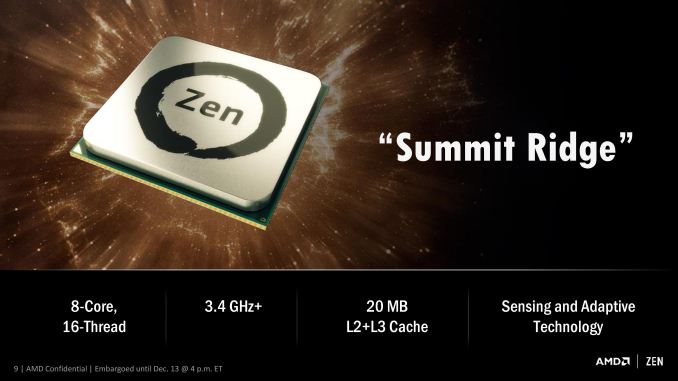
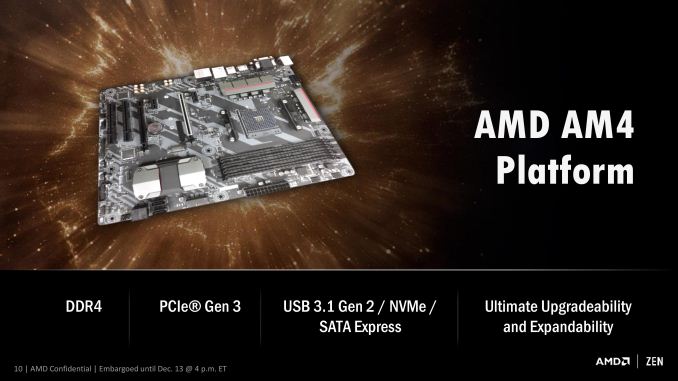
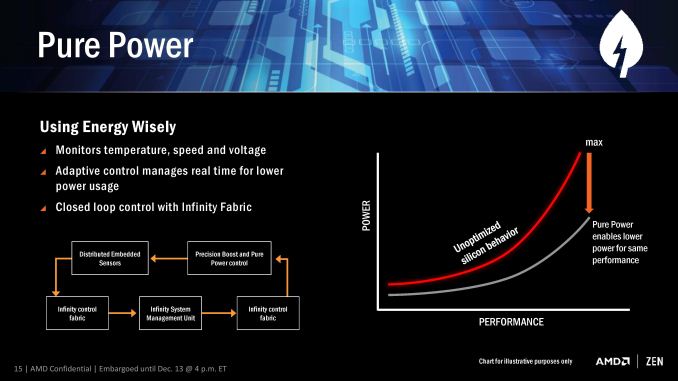

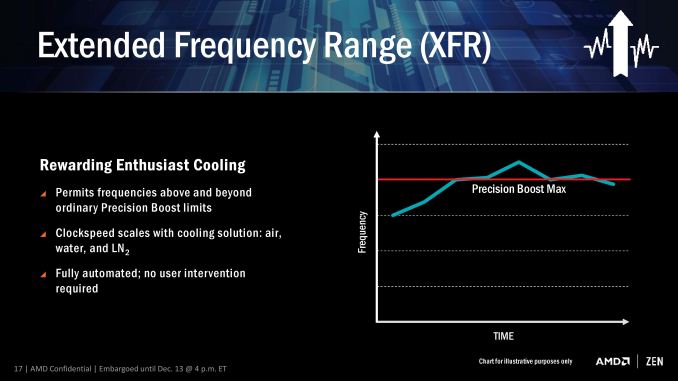
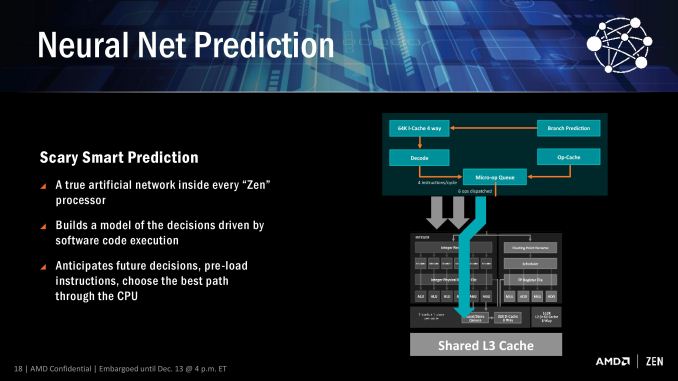
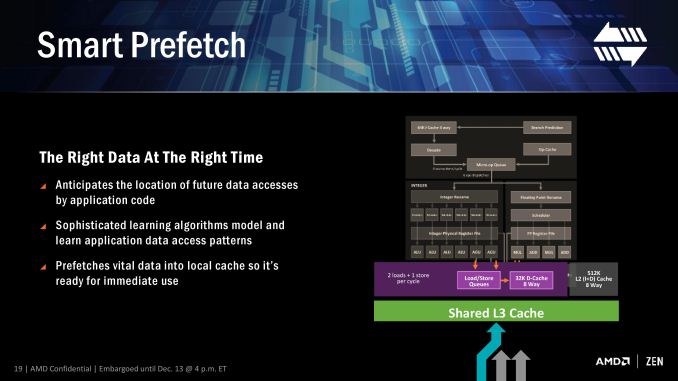

 Quote
Quote



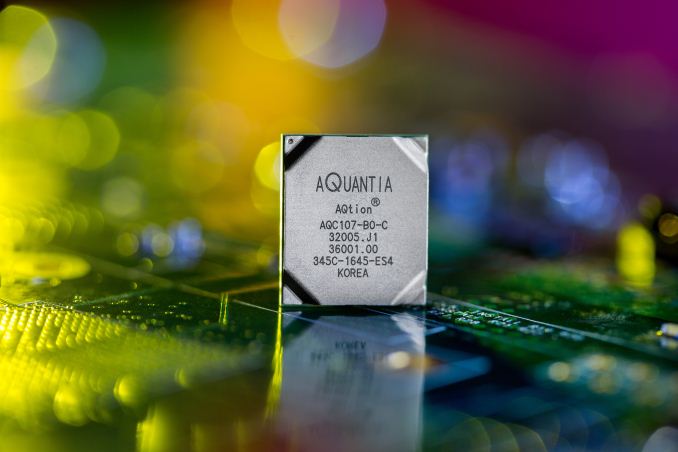
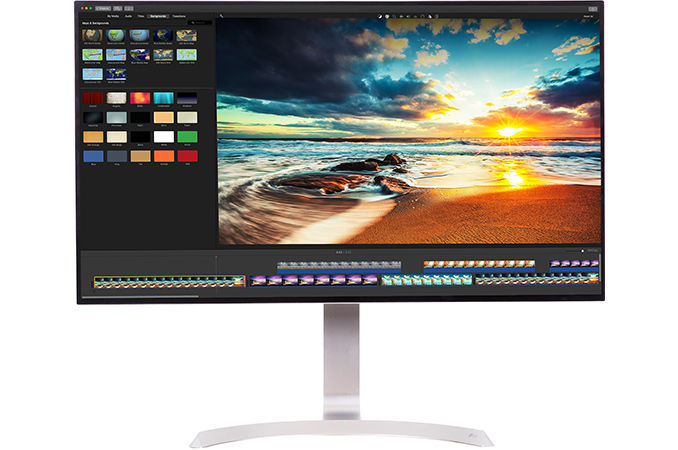
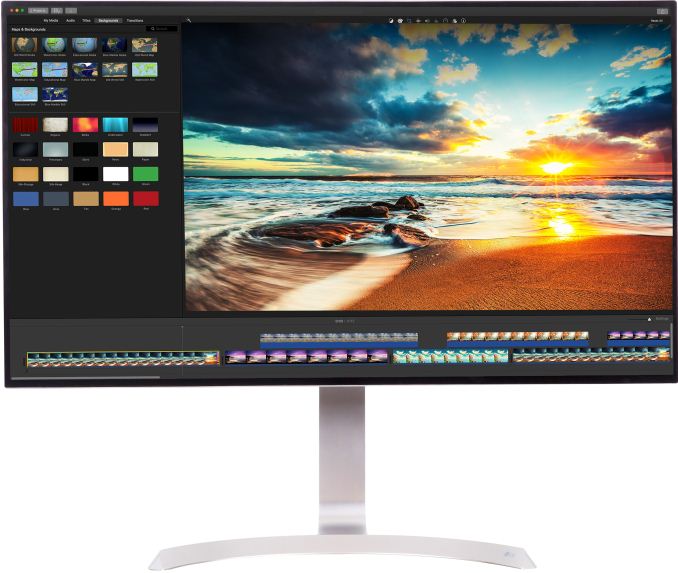

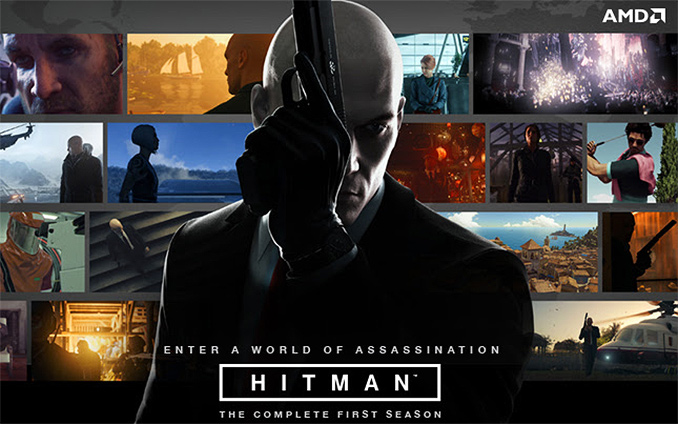

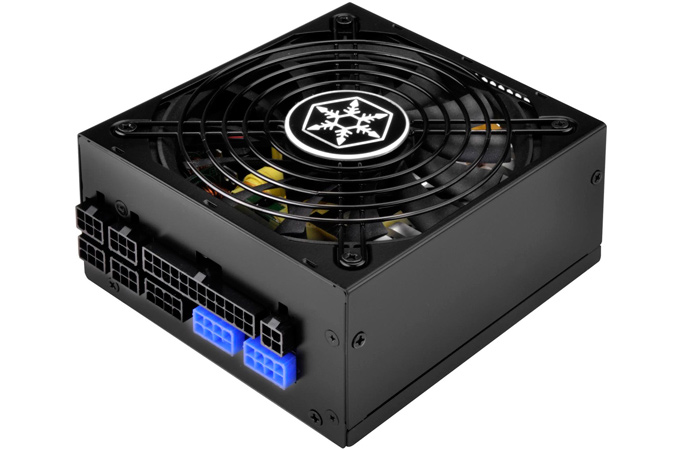
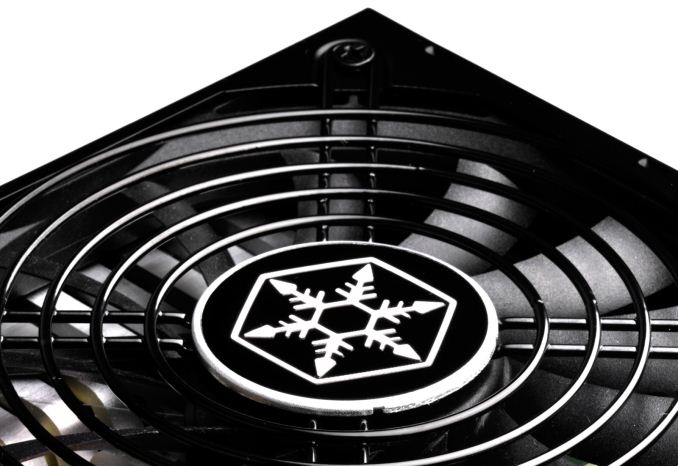

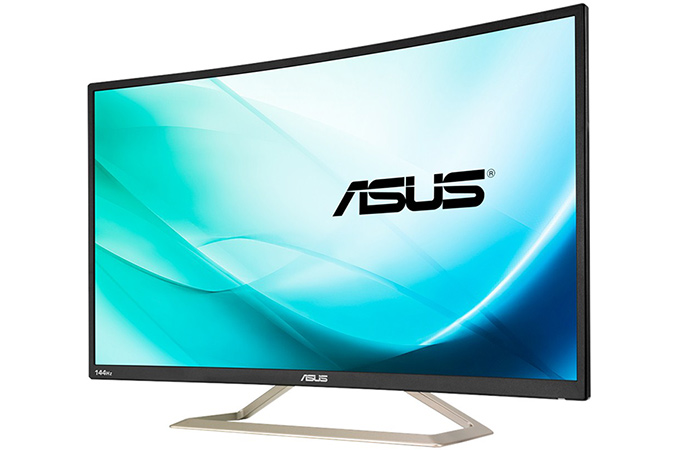




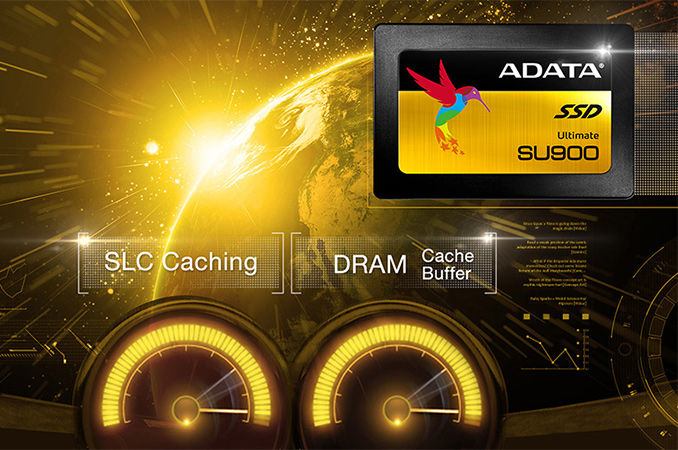
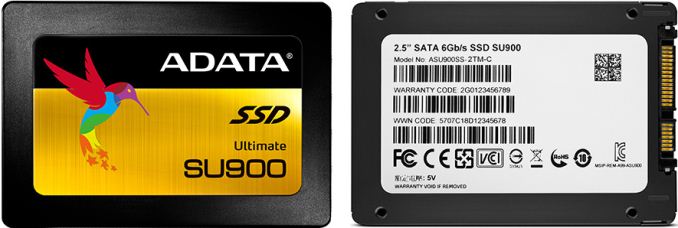
















Bookmarks